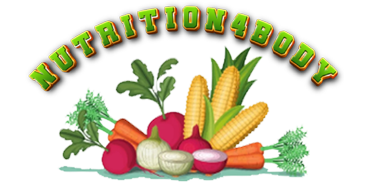Food Groups and Recommended Servings
Food groups and their suggested serving sizes is one of the core components of this understanding. A balanced diet is essential to living a healthier lifestyle, and this must be understood. In addition to guaranteeing sufficient nutritional intake, a well-rounded diet that includes a range of food groups also enhances general wellbeing. We explore the fundamentals of several food groups and the suggested serving sizes in this extensive guide to help you reach your best health.
Food Groups: Grains and Cereals.
A healthy diet is built on grains and cereals, which supply vital fibre, vitamins, minerals, and carbs. Choose whole grains since they are higher in fibre and minerals, like brown rice, quinoa, whole wheat bread, and oats. It is advised to have 6–8 servings of grains and cereals daily. Each of which is the same as one slice of bread, half a cup of cooked rice or pasta, or one ounce of cereal.
Food Groups: Vegetables.
Nutrient-dense vegetables are rich in fibre, vitamins, minerals, and antioxidants. They are essential for preserving general health and lowering the chance of developing chronic illnesses. Make it a point to eat a range of vibrant veggies, such as tomatoes, bell peppers, broccoli, leafy greens, and carrots. It is advised to consume three to five servings of vegetables per day, which is equal to half a cup of cooked vegetables or one cup of raw leafy greens.
Food Groups: Fruits.
Fruits are the sweet treats of nature, full with fibre, vitamins, minerals, and antioxidants. Including a variety of fruits in your diet enhances their flavour and nutritional content. Choose whole, fresh fruits instead than fruit liquids to get the most fibre and nutrients. Aim for two to four servings of fruit a day, which are roughly equal to half a cup of chopped fruit or one medium-sized fruit.
Food Groups: Protein Sources.
The building blocks of the organism, proteins are necessary for several physiological processes as well as muscle growth and repair. Eat a range of foods high in protein, including fish, eggs, poultry, lean meats, legumes, tofu, nuts, and seeds. Having 2-3 servings of protein sources daily, which is equal to 3–4 ounces of cooked meat, chicken, or fish, one egg, or half a cup of cooked legumes.
Food Groups: Dairy and Alternatives.
Calcium, protein, vitamins, and minerals ensure healthy bones and wellbeing can be found in dairy products and their substitutes. To reduce your intake of saturated fat, go for low-fat or fat-free products. Consume dairy products like yoghurt and cheese as well as fortified plant-based milk substitutes like almond or soy milk. Aim for two to three servings of dairy or dairy substitutes each day, which is equal to one cup of milk, one cup of yoghurt, or one and a half ounces of cheese.
Food Groups: Fats and Oils.
Fats and oils are necessary for the body to absorb fat-soluble vitamins and to produce energy. Limit saturated and trans fats, which are present in fried foods, processed snacks, and baked products. Instead, choose healthy fats like those found in avocados, nuts, seeds, and olive oil. Pay attention to serving quantities and try to use fats in cooking or sauces sparingly.
Food Groups: Water.
Water is often overlooked but is a vital component of a healthy diet. Staying hydrated is essential for overall health, digestion, metabolism, and cognitive function. Aim to drink at least 8-10 glasses of water per day, and adjust intake based on individual needs, physical activity levels, and climate.
Incorporating a variety of food groups in appropriate serving sizes to meet nutritional needs and promote overall health. By prioritizing whole, nutrient-dense foods and being mindful of portion sizes, you can embark on a journey towards a healthier lifestyle. Remember to consult with a healthcare professional or registered dietitian for personalized nutrition advice based on individual needs and goals.






Recent Comments